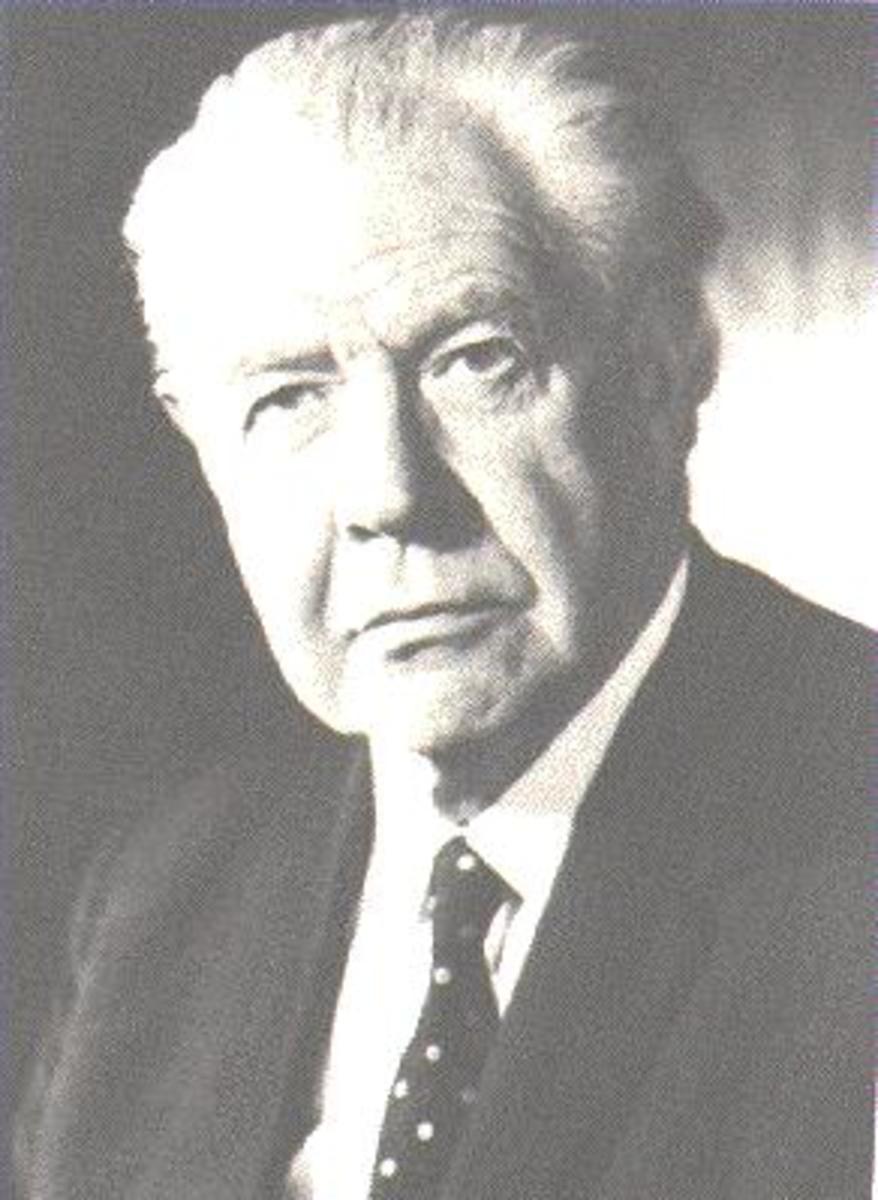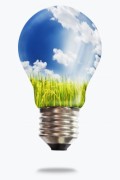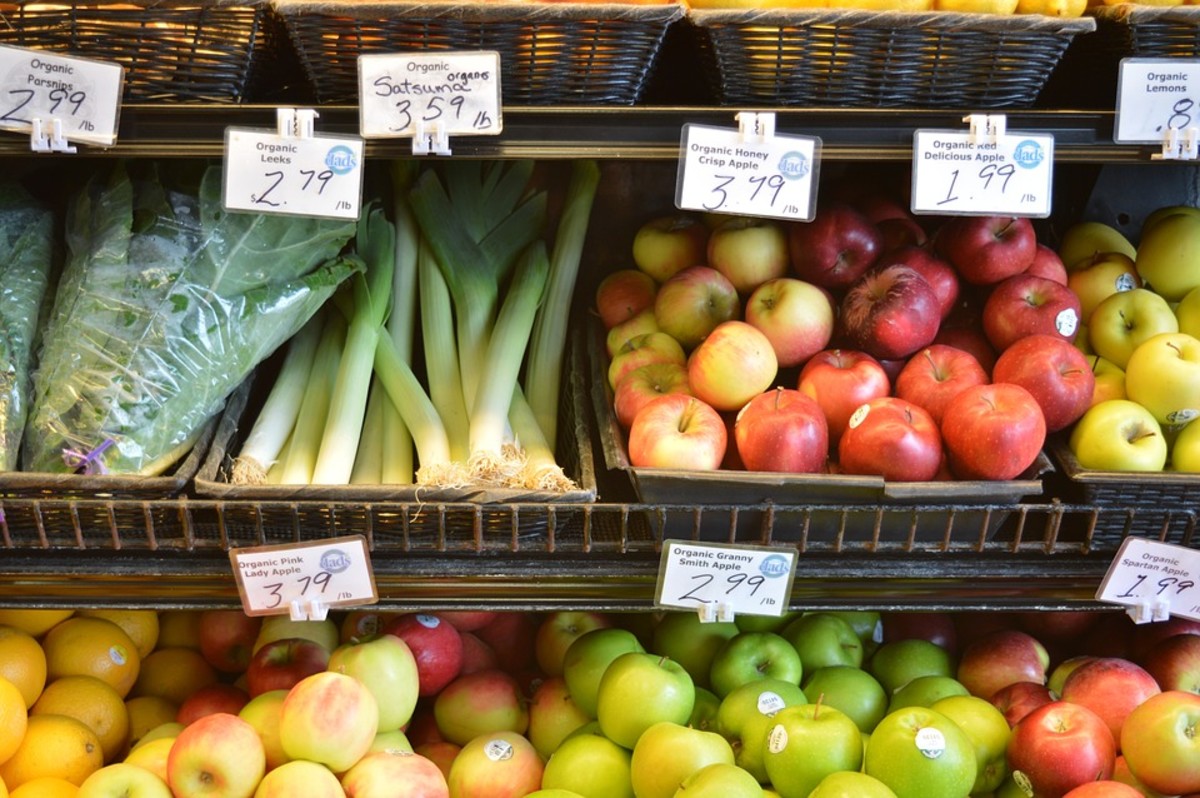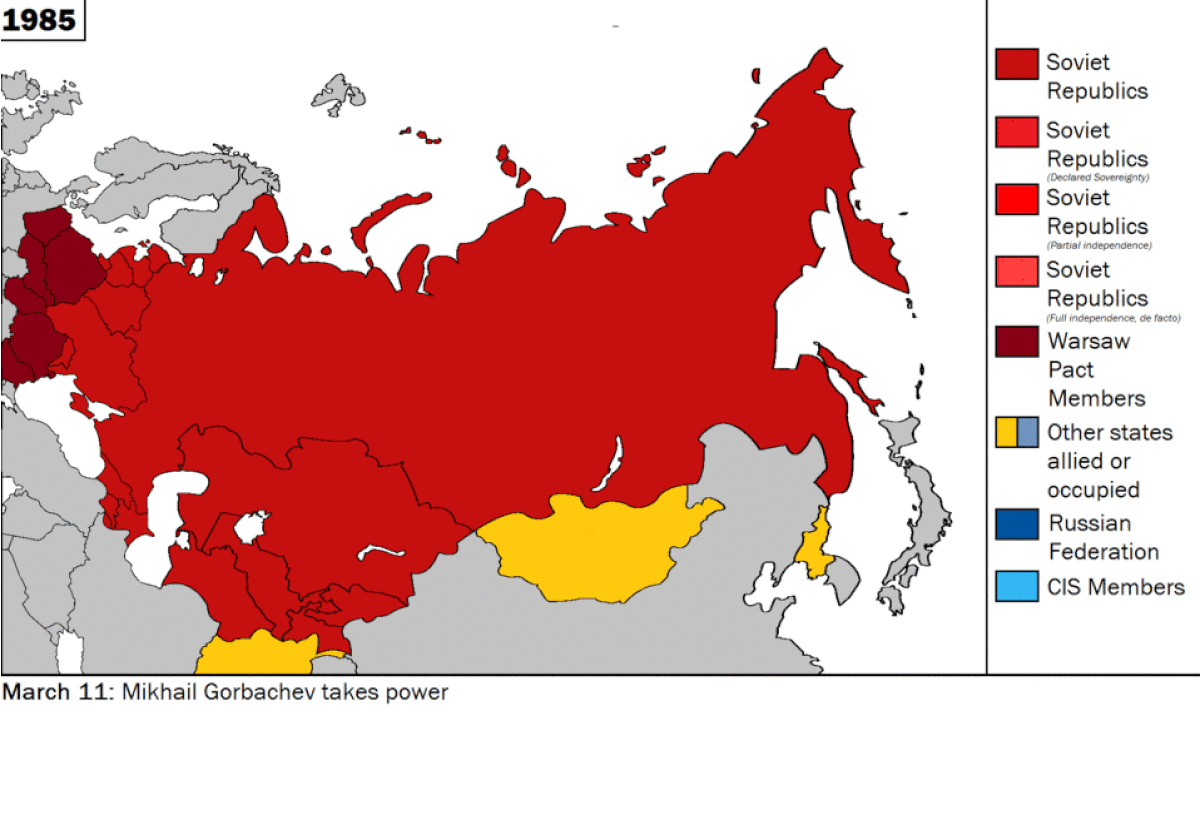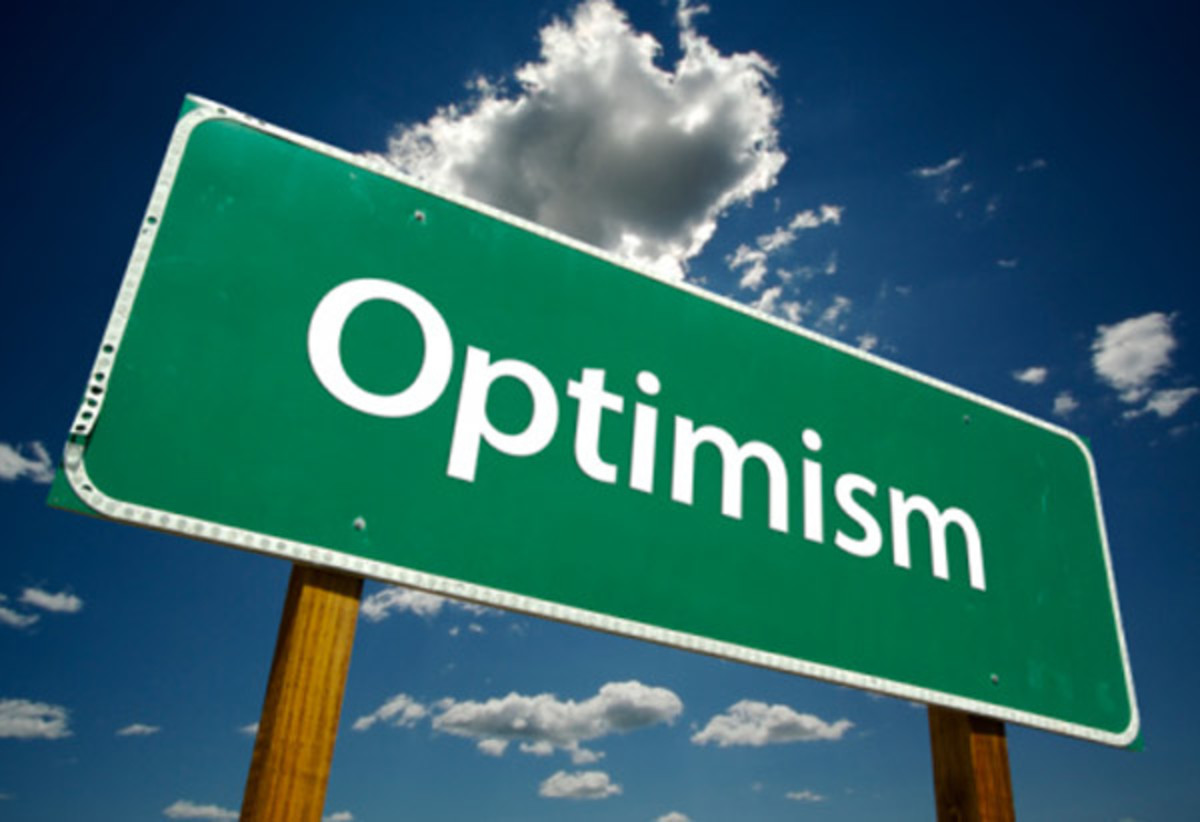The Comprehensive Overview of Health Economics: The Concept and Areas of Economics
The Comprehensive Overview on the Concepts, Principles and Applied Theories in Health Economics: Concept and Areas in Economics
The concept of economics is usually focus on the scarcity and productivity of resources to satisfy the basic human needs and wants with the use of money as a medium of exchange. The society has been motivated to produce various commodities with an interest of profit and later distribute to the commercial and business centers that need to use a medium of exchange to buy or sell goods and services to satisfy the human wants. Likewise, the basic idea of economics is to know the utility or the satisfaction of human wants. The society needs to produce these goods, which are scarce; therefore, it has corresponding value or price. The production of goods is usually the basic and secondary needs that the society must have in order to live. It has corresponding price using money as a medium of exchange.
These are the varied explained definitions of economics
· Economics is the study of how people satisfy their needs and wants with the corresponding monetary value in the production of goods and services.
The definition studies how people satisfy their needs and wants provides discussion about the physiological needs such as air, water, sex, clothing, shelter, education, and other secondary needs. This is the basis of the demand of the product because people need to consume it , however, there is a need to buy and sell products.
· Economics studies the production, distribution, exchange and consumption of good and services in a given society.
This provides information about the branches of economics as to the technical operation and process in the management of scarce resource. The production provides the manufacturing of products; distribution is the market distribution of the business outlet such as supermarket, stores and malls; exchange is the use of money to buy and sell the products; consumption is the purchasing of the products (goods) in the market.
· Economics is the allocation and utilization of scarce resources to meet the human wants and desires.
The allocation and utilization of scarce resources are those insufficient economic resources that need to transform as good and services. The production of this scarce resources may now use to meet the human need and wants such as food (agricultural products and processed manufactured goods); shelter ( creation of residential areas), education ( schools), health (hospitals) and others.
· Economics is the market process that is characterize by the buying and selling of products with the corresponding analysis of the factors that affect the demand and supply of the good and services.
The human satisfaction of needs and wants is the best way to create the demand in the market. Those things that people want to buy may now transform as economic demand. It is the best indicator for the business and enterprise to sell their products.
· Economics studies the mankind in the ordinary business of life with the use of money as the purchasing power for the material wealth.
The human activities on trade, business and industries are the basic economic concern in the production of goods and services. However, the medium of exchange is still the use of money to buy or sell products in the economic market. The use of money also provides wealth for this is the basis in purchasing the products or services in the business enterprise.
· Economics is concerned in the use of natural resources for the productive resources in the satisfaction of human wants.
The economic resources are produce to transform natural resources (oil, ore, gold, bronze and etc.) into productive enterprises such as the creation of cars, appliances, electricity, cellphones, computers and etc.
Based on these definitions the following operational terms and concepts of economics must be understood by the reader:
· Economic Demand The economic demand derives from the human needs and wants based on the capacity to purchase certain goods and services in the societal market. In this sense, there are two conditions to meet the economic demand : (1) the willingness to buy the products; and (2) the capacity of paying the amount for that particularly products.
· Economic Supply.The concept of supply reflects on the goods and services needed to produce in a given market. It is more on the production of goods and services to satisfy the increasing needs and wants of the society. The main player in the study of economic supply is the entrepreneurs; the other terms are businessmen, capitalists, supplier, traders or investors.
· Human Satisfaction . This considers the physiological and biological needs that include clothing, shelter, education, food, health including the secondary needs in life.
· Monetary Value . It refers to the medium of exchange that is “money” to buy and sell the products in market such as cars, appliances, houses, shirts, lands, and other economic resources.
· Management of Scarce Resources .It is the transformation of the insufficient economic materials such as mineral resources may transform as gold, steel, copper, bronze and iron. Agricultural crops as the need to plant rice, corn, vegetables, and fruits.
· Production .It is the creation of manufactured products and services that has market price and value which is being created by the economic demand in the society. This is consider as economic suppliers and producers with other terms such as traders, proprietors, investors, capitalists, and managers.
· Consumption . It is the human desire to consume the material goods and services that use “money” as a medium of exchange. The consumption or economic demand of manufactured products may determine the price and profit in the market place.
· Distribution. This refers to marketing strategy to identify the economic demand and supply. The economic distribution designates specific market delivery of the manufactured good to the potential consumers, costumers or stakeholders.
Based on the varied definitions of economics, the utility or satisfaction of human wants is present to create particular demand in the market. The basis of human satisfaction such as clothing, shelter, education, health, food and secondary wants plays an important role to produce goods and services which form part what we call “ “business”, “enterprise” or “trade”. The ordinary business life may need “money” as a medium of exchange for the satisfaction of human needs and wants.
Economic Demand
These are the five common things to know why need to satisfy our needs and wants in order to survive and regain esteem in a highly structured society.
1) Clothing
These are clothing (shirts, pants, underwear, shoes and others) which we are using with corresponding style, fashion and fads depending on the culture of the society. These are produce by manufacturing firm with different famous brands such as bench, penshoppe, gap, levis and others).The production of these need factory workers, factory plant, marketing and promotion of the product, and display in malls and market to sell these products.
2) Shelter
The shelter or residential area which is consider as a house includes the basic compartment of house such as dining room, kitchen, living room, garage, bedroom and toilet. The construction of a house that needs a carpenter, plumber, mason, engineer, architect and other relevant work. The construction workers are paid through wages and salaries.
3) Education
In education, the schooling of individual which is elementary, secondary, tertiary and graduate level. This also needed not only on education but employment to earn an income and use it to buy the needed goods.
4) Food
The basic need for food for biological survival of life. The need of body nutrients is the sole purpose on its biological existence. The human body needs food such as vegetable ,meat, fish, pork, fruits and edible foods. The excess or lack of food intake and nutrients may create problems of the physical, mental and social well-being. The presence of contaminated food and unhealthy food intake may also produce bad effect to the body.
5) Health
The health life style may create a better life. While the presence of diseases and illnesses may create health care adherence to treat such problem through the services of the physician and confinement in hospital or clinic. The health service rendered has corresponding medical cost or expenses for the treatment of particular disease.
6) Secondary Needs
The creation of secondary need such as the use of cars ( Honda, Mitsubishi, Toyota and etc.) appliances such as television ( Sony, LG,Sharp and etc.), computers ( Microsoft, Apple and etc.), refrigerators ( Kelvinator, National and etc.), air-condition, DVD, and other appliances have been the most in demand in the market . They have produce employment and investment such as factory, commercial offices, malls and other tangible goods that provided complexities in the life of society because of the production of these products
5 Things to Know in the Satisfaction of Human Wants http://hubpages.com/hub/satisfactionofhumanwants
The satisfaction of human wants is usually directed from the basic needs such as food, clothing, shelter, health and etc. In the Maslow’s Hierarchy of Needs, we consider this as the physiological needs as the basic components for survival. However, we always need money to buy things we want in the society which is considered as consumers’ good. Marshall explained that "money" or "general purchasing power" or "command over material wealth," is the center around which economic science clusters; this is so, not because money or material wealth is regarded as the main aim of human effort.
The insatiable needs or utility of basic and secondary needs of man has produce economic resources for employment, investment and the expansions of other material goods in the market. Likewise, the people choose to use scarce or limited productive resources (land, labor, equipment, and technical knowledge) in order to produce various commodities and to distribute these goods to various members of the society for their consumption.
Economic Supply
The societal needs and wants that make the life more complicated in this time. This is the “age of commercialism” that the production of goods and services is commercially advertised. The economic supply is well promoted in the broadcast and printed media, commercial establishments, and entertainment industries. This makes life complicated as the society needs more money and income to buy what they want.
(1) Beverages , Cigarettes and Liquors
(2) FoodCenter- restaurant, and fast food chain.
(3) Commercial Establishments- supermarket, malls and shopping centers.
(4) Transport Services - ships, boats, cars, motorcycles, airplane and trains.
(5) Entertainment Industries - motion pictures, and theaters.
(6) Appliances- TV, air-condition units, heater, DVD, and I-pod.
(7) Clothing and fashion accessories – shirts, pants, underwear,necklace, rings and hats
(8) Information Technology-Internet, social networking, computer games , websites, and blog.
(9) Broadcast and Printed Media Networks- TV and radio stations, books, journals, newspapers, and comics.
(10)Educational institutions- schools, universities and colleges.
(11) Medical and Health Services – hospitals, medical centers and clinics.
The Economic Resources and Transformation of Scarce Resources
The economic resources are the processing of producing good and services that satisfy the human needs and wants of the society.
They transformed the natural, physical and mineral resources to produce material goods that have economic and monetary values to satisfy the needs and wants of individual. The transformation of economic resources is the by-product of scarcity wherein people should use certain monetary amount to transform these material goods that are acceptable to the people. Once there is already value of certain economic good, it is already a scarce resource which people tend to use money to buy these material good.
Broad Categories of Economic Resources
1. Labor. These are the workers, supervisors and managers who used their physical and mental effort to produce good and services in the society. The productions of goods cars, appliances, computers, air condition units, canned goods and other market products are created by services of factory workers and personnel. They are being paid in wage and salaries. Those who owned the factory or corporations get profit in exchange of capital they invested to produce goods. They are usually classified as Chief Executive Officer, Presidents, Board of Directors in top management; Supervisor, Department Head, Chief, and Administrative Officers for the middle management; clerks, personnel staff, janitors, factory workers, utility employees and rank and file personnel those who would work to produce good and services. While, the establishment of hospital has specialist physicians, nurses dentist, medical technologist, administrative officers
2. Capital .The needed financial resources to pay the materials, labor, equipment and facilities, machinery, and other related expenditures in order produce the specific goods and services in the market. The business and investment usually raise financial capital to produce specific products or goods in the market by simply borrow money to the commercial banks as part of the equity other than the financial investment they included. This is now the financial obligation of the business to pay for the principal and interest payments of the money being borrowed in the banks.
A good example of the translation of capital is when you purchase equipment and machinery to produce the product. The machinery to produce cars, appliances , and other material goods. In the hospital, radiographic equipment, sterilizing equipment, operating room instrumentation, fetal monitors, infant incubators, ecg instruments, operating table lights, ct scans, other medical instruments, and operating room equipment
3. Entrepreneurs. The main purpose in creating a business is to earn “profit”. The entrepreneurs invest the “save money” for self-interest to earn more from the income through ‘profit”. When the entrepreneurs organize a corporation, partnership or single proprietorship to produce the market products in the highly competitive world must see to it that the enterprise would work to earn profit. The enterprise is characterize to have “business risk” because you need to sell the manufactured products to get the return-of- investments on the cost of production and later the net profit.
4. Natural Resources. The transformation of the natural and mineral resources including the land for the production of good and services with the corresponding monetary value .
On land, this is use to produce goods and services such as commercial establishment, the rent of offices, factory plants, hospitals/clinics, mall /market, terminals. These are the locations of investment or capital to produce those things that the society needed. The existence of urban areas has tremendous impact as to the production of goods and services which maybe classified as residential areas, commercial areas, industrial areas. The medical services need to construct hospital to provide primary, secondary and tertiary services.The land use for industrial sites is the export processing zones which we can find factory and industrial plants to produce different kind of good.
On natural resources and mineral resources are identified below for the production of goods and services in the market.
1.Mineral Resources ( such as metal, ore, gold ,silver, steel, oil and other by-products of mineral resources)
· Metal/Steel- building materials for residential, industrial and commercial areas; Steel parts of automobile, appliances, laboratory equipment, chairs, and other steel products.
· Gold ,Silver and Bronze - jewelries.
· Oil and petroleum- gasoline, diesel, asphalt, car oil and other petroleum products
2. Natural Resources
· Forest Products- Lumber for the construction of residential, commercial and industrial areas; appliances; chairs ,tables, transportation accessories, office materials and other by products of lumber and woods.
· Lands and soil- construction of buildings such as residential, commercial, industrial, including hospitals, and clinics; sites and location of the office.
· Water System- drinking water; commercial mineral, electricity, marine products
Economic Goods
Marshall pointed out that man cannot create material things. In the mental and moral world indeed he may produce new ideas; but when he is said to produce material things, he really only produces utilities; or in other words, his efforts and sacrifices result in changing the form or arrangement of matter to adapt it better for the satisfaction of wants. All that he can do in the physical world is either to readjust matter so as to make it more useful, as when he makes a log of wood into a table; or to put it in the way of being made more useful by nature, as when he puts seed where the forces of nature will make it burst out into life .
Marshall defines economics s a study of mankind in the ordinary business of life; it examines that part of individual and social action which is most closely connected with the attainment and with the use of the material requisites of well being.
Consumers' goods (called also consumption goods, or again goods of the first order), such as food, clothes, etc., which satisfy wants directly on the one hand.
Producers' goods (called also production goods, or again instrumental, or again intermediate goods), such as ploughs and looms and raw cotton, which satisfy wants indirectly by contributing towards the production of the first class of goods.
You cannot buy consumer goods without “money” that is why it is considered as general purchasing power. Therefore, you can buy or purchase goods with the use of money. Thus though it is true that "money" or "general purchasing power" or "command over material wealth," is the center around which economic science clusters; this is so, not because money or material wealth is regarded as the main aim of human effort, nor even as affording the main subject-matter for the study of the economist, but because in this world of ours it is the one convenient means of measuring human motive on a large scale. , when the motive to a man's action is spoken of as supplied by the money which he will earn, it is not meant that his mind is closed to all other considerations save those of gain.
For even the most purely business relations of life assume honesty and good faith; while many of them take for granted, if not generosity, yet at least the absence of meanness, and the pride which every honest man takes in acquitting himself well. Again, much of the work by which people earn their living is pleasurable in itself; and there is truth in the contention of socialists that more of it might be made so. Indeed even business work that seems at first sight unattractive often yields a great pleasure by offering scope for the exercise of men's faculties, and for their instincts of emulation and of power. For just as a racehorse or an athlete strains every nerve to get in advance of his competitors, and delights in the strain; so a manufacturer or a trader is often stimulated much more by the hope of victory over his rivals than by the desire to add something to his fortune.
Human wants are simply those things you want to buy through “money” or this is your “wealth”. These are the things which you think are pleasurable to satisfy your human need such as food, clothing, shelter and etc. Take the case of food or clothing, you don’t simply buy it must take your utility ( Satisfy what specific food or clothing you want).
Material and Non- Material Goods
Marshal explained that all wealth consists of desirable things; that is, things which satisfy human want directly or indirectly: but not all desirable things are reckoned as wealth. The affection of friends, for instance, is an important element of well being, but it is not reckoned as wealth, except by a poetic license. Let us then begin by classifying desirable things, and then consider which of them should be accounted as elements of wealth. In the absence of any short term in common use to represent all desirable things, or things that satisfy human wants, we may use the term Goods for that purpose.
1. Material Goods
Material goods consist of useful material things, and of all rights to hold, or use, or derive benefits from material things, or to receive them at a future time. Thus they include the physical gifts of nature, land and water, air and climate; the products of agriculture, mining, fishing, and manufacture; buildings, machinery, and implements; mortgages and other bonds; shares in public and private companies, all kinds of monopolies, patent-rights, copyrights; also rights of way and other rights of usage. Lastly, opportunities of travel, access to good scenery, museums, etc. are the embodiment of material facilities, external to a man; though the faculty of appreciating them is internal and personal.
2. Non- Material Goods
A man's non-material goods fall into two classes.
1. Internal Non- Material Goods. It consists of his own qualities and faculties for action and for enjoyment; such for instance as business ability, professional skill, or the faculty of deriving recreation from reading or music.
2. External Non-Material Goods .They consist of relations beneficial to him with other people. Such, for instance, were the labor dues and personal services of various kinds which the ruling classes used to require from their serfs and other dependents. But these have passed away; and the chief instances of such relations beneficial to their owner now-a-days are to be found in the good will and business connection of traders and professional men.
Marshall explained the term goods and transferable and non- transferable . Among the latter are to be classed a person's qualities and faculties for action and enjoyment (i.e. his internal goods); also such part of his business connection as depends on personal trust in him and cannot be transferred, as part of his vendible good will; also the advantages of climate, light, air, and his privileges of citizenship and rights and opportunities of making use of public property. Those goods are free, which are not appropriated and are afforded by Nature without requiring the effort of man. The land in its original state was a free gift of nature. But in settled countries it is not a free good from the point of view of the individual.
Remember that in economics when you speak of free goods such as wood, climate, light , air and water have no price because it is plenty and enough to use. When you have these that are scarce, you have to buy them such as mineral water, air-conditioned units, electric bulbs and other things that you are buying. This is what you call scarce resources which you need “ money” to buy them.
Wood is still free in some forests. The fish of the sea are free generally: but some sea fisheries are jealously guarded for the exclusive use of members of a certain nation, and may be classed as national property. Oyster beds that have been planted by man are not free in any sense; those that have grown naturally are free in every sense if they are not appropriated; if they are private property they are still free gifts from the point of view of the nation. But, since the nation has allowed its rights in them to become vested in private persons, they are not free from the point of view of the individual; and the same is true of private rights of fishing in rivers. But wheat grown on free land and the fish that have been landed from free fisheries are not free: for they have been acquired by labor.
2 Classes of Goods
Furthermore, Marshall identified 2 classes of goods. When a man's wealth is spoken of simply, and without any interpretation clause in the context, it is to be taken to be his stock of two classes of goods.
1st Class are those material goods to which he has (by law or custom) private rights of property, and which are therefore transferable and exchangeable. This includes not only such things as land and houses, furniture and machinery, and other material things which may be in his single private ownership, but also any shares in public companies, debenture bonds, mortgages and other obligations which he may hold requiring others to pay money or goods to him. On the other hand, the debts which he owes to others may be regarded as negative wealth; and they must be subtracted from his gross possessions before his true net wealth can be found.
These are the things you buy or purchase and own them. If you sell a product it is transferable and exchangeable which can be in the realm of business. They are going to produce things for us to use and for them to own profit. So when you deal with “money” this is the medium of exchange for any goods and services. In short it is more on business and economics as you deal the exchange through the use of money.
The 2nd Class are those immaterial goods which belong to him, are external to him, and serve directly as the means of enabling him to acquire material goods. Thus it excludes all his own personal qualities and faculties, even those which enable him to earn his living; because they are Internal. And it excludes his personal friendships, in so far as they have no direct business value. But it includes his business and professional connections, the organization of his business, and—where such things exist—his property in slaves, in labor dues, etc.
The Concluding Substance about Economics
Finally, Marshall pointed out that economics is a study of men as they live and move and think in the ordinary business of life. It concerns itself chiefly with those motives, which affect, most powerfully and most steadily, man's conduct in the business part of his life. Everyone who is worth anything carries his higher nature with him into business; and, there as elsewhere, he is influenced by his personal affections, by his conceptions of duty and his reverence for high ideals. And it is true that the best energies of the ablest inventors and organizers of improved methods and appliances are stimulated by a noble emulation more than by any love of wealth for its own sake. But, for all that, the steadiest motive to ordinary business work is the desire for the pay which is the material reward of work. The pay may be on its way to be spent selfishly or unselfishly, for noble or base ends; and here the variety of human nature comes into play. But the motive is supplied by a definite amount of money: and it is this definite and exact money measurement of the steadiest motives in business life, which has enabled economics far to outrun every other branch of the study of man. Just as the chemist's fine balance has made chemistry more exact than most other physical sciences; so this economist's balance, rough and imperfect as it is, has made economics more exact than any other branch of social science. But of course economics cannot be compared with the exact physical sciences: for it deals with the ever changing and subtle forces of human nature
Marshall further elucidated in the substance of economics on business wherein you have a motive to earn money by means of “profit”. They produce goods and services for us to pay with a selfish or unselfish end to gain “profit”.It concerns itself chiefly with those desires, aspirations and other affections of human nature, the outward manifestations of which appear as incentives to action in such a form that the force or quantity of the incentives can be estimated and measured with some approach to accuracy; and which therefore are in some degree amenable to treatment by scientific machinery. An opening is made for the methods and the tests of science as soon as the force of a person's motives—not the motives themselves—can be approximately measured by the sum of money, which he will just give up in order to secure a desired satisfaction; or again by the sum which is just required to induce him to undergo a certain fatigue.
For instance the pleasures which two persons derive from smoking cannot be directly compared: nor can even those which the same person derives from it at different times. But if we find a man in doubt whether to spend a few pence on a cigar, or a cup of tea, or on riding home instead of walking home, then we may follow ordinary usage, and say that he expects from them equal pleasures.If then we wish to compare even physical gratifications, we must do it not directly, but indirectly by the incentives which they afford to action. If the desires to secure either of two pleasures will induce people in similar circumstances each to do just an hour's extra work, or will induce men in the same rank of life and with the same means each to pay a shilling for it; we then may say that those pleasures are equal for our purposes, because the desires for them are equally strong incentives to action for persons under similar conditions.
Areas of Economics
Areas of economics may be classified in various ways, but an economy is usually analyzed by use of microeconomics or macroeconomics.
Microeconomics
Microeconomics studies the economic decisions and behaviors of the individual and firms that affect the supply and demand for good and services. This concept also provides information how goods and services are being bought and sold at certain price in the market.
The economic decisions and behaviors of the market is how the industries provide specific price of a given commodity as they consider the cost of production including the situation in the demand and supply on the economic activities. This is usually determine by the individual demand as they buy the products in the market. The theory considers of quantity demanded by buyers and quantity supplied by sellers at each possible price per unit. The demand of the product is the willingness of the buyer to pay a certain product and the supply of the products is the willingness of the seller to sell on the specific price of the product.
In business you must learn to know for the price on the produce goods, the market of the product and how to promote the product. The high demand of the products may provide the opportunity of the firm to gain profit. However, the risk of business is when you produce a product in the market and no one would be willing to buy from the given price in the market may have the possibility of not gaining any profit at all.
The prices of commodities or products are set by certain rule in the competitive market. There is a certain point in market price and supply which is called the equilibrium that dictated the acceptable price between the market players and buyers of the product. This is broadly termed demand-and-supply analysis based on the general principle of equilibrium.
The general rule in economics is if the demand of the good or product is low the tendency of the supplier is to reduce the price of their commodity. However, if there is high demand of the product the price is also high. The supplier is always in the position to study how to produce high demand. This is usually done through promotion and marketing of the product.
If you sell your product, there is always a competition on price. Individual which is the demand will buy the product when it is low in price with of course good quality of the product. Therefore, in the pricing mechanism there is a point for you to lower down the price at an acceptable rate for all market players which later on can give a price ( equilibrium-meaning this is acceptable prices to other competitors and buyers) of a product.
In economics, you must remember that the more competitors of goods (products) the better it will lower down the price this called perfect competition. However, if there is no competition such as electric company, gasoline company and other producer of product will have the disadvantage that they can simply dictate the price of their commodity. This is what you call monopoly or imperfect competition.
Macroeconomics
Macroeconomics examines the national economy as a whole by looking at the national income, employment rate, inflation rate, exchange rate and other related broad aggregates on the economic activities. It also studies the national growth and development, investments, corporate world , fiscal policy and other indicators of growth.
Macroeconomics is not much of the concern of students although for learning purposes they can examine the entire economy of the country through figures and data about unemployment rate, price inflation, national income such as GDP and GNP, exchange rate, and other measurement of national economy.
- The employment data is usually taken from the occupational jobs of the labor force such as professionals, skilled laborers, unskilled laborers and occupation. It also includes the current work in transportation sectors, agriculture and fishery sectors, mining industries, manufacturing sectors, service sectors and other sectors. For health sector, it includes the employment of medical personnel such as nurses, physicians, midwifes, attendants and care givers for the hospital, clinics, and medical centers. The pharmaceutical companies are also included such as the pharmacist, medical representatives, and medical service staff for the production of medicines and drugs.
- The national income is taken from the Gross Domestic Product (GDP) and Gross National Product (GNP) that derive from the production of good and services within and outside the country. The concepts of international and domestic trade are considered in these areas such as import and export of medicine products, investment and income of manufacturing industries.
- The exchange rate is derive form the monetary values of currency such as to other monetary units such as dollar, euro, pounds, dinar, baht, yen and etc. This is important for us to know the monetary value of a given currency such as peso because of its purchasing value to goods and services.

